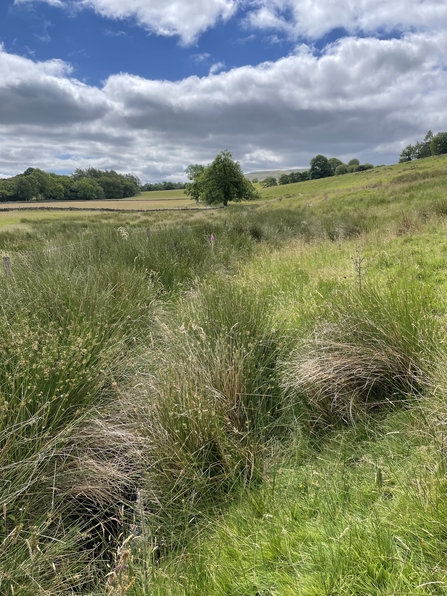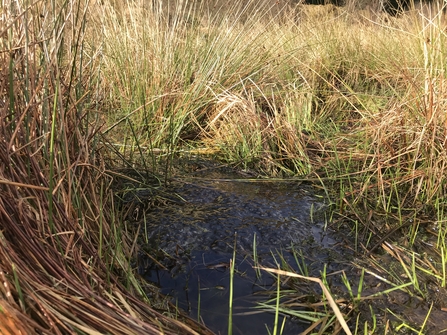Anyone who has taken a walk in the North Pennines in the early summer is bound to have encountered a calling lapwing or curlew circling up over patches of thick rush in amongst grazing stock – for me, it is one of the most characteristic sights of the North Pennines Area of Outstanding Natural Beauty.
The uplands in the North East are often dominated with stock grazed grassland which includes scattered patches of rush pasture. While upland rush pasture looks vastly different from ‘ideal’ water vole habitat, it is nevertheless vital to their continued presence in the North East.
What is rush pasture habitat and why is it important?
Tree clearance in the uplands led to a rise in open moorland habitat, which was then grazed heavily by stock animals (particularly sheep who find rushes unpalatable) leaving a scattered mosaic of thick rush pasture habitat through grazed grassland. Rush pasture can present as species rich habitat or simply as clumps of rush plants through a field; while one is more beneficial to wildlife, even species poor rush pasture can be an important haven for animals like water voles.
Supported in its maintenance by the Rural Payments Agency and listed in the Biodiversity Action Plan priority habitats, rush pasture is recognised as a rare and important habitat type throughout the UK. However, rush plants have not always been looked upon favourably and the problem of the infestation and subsequent management of rush in wet pasture has always been an issue for farmers. Rush plants have historical significance, they were gathered to stuff medieval mattresses, woven into mats for floors, stripped and used as candle wicks and had (and continue to have) many more interesting functions including some religious ceremonies. Once a much more abundant habitat, much of the UK’s rush pasture habitat has been steadily cleared over time with an estimated 8% left of its former coverage.
The species rich varieties of the habitat are also known as culm grassland in Devon and Cornwall, after the Culm Measures on which it is found, litter meadow in East Anglia for its historic use in bedding, and rhôs pasture in Wales. It occurs in poorly drained neutral and acidic soils, most commonly in the lowlands and upland fringe. Where present, it often serves to highlight areas of poor drainage, ditches, dips and wet flushes.



